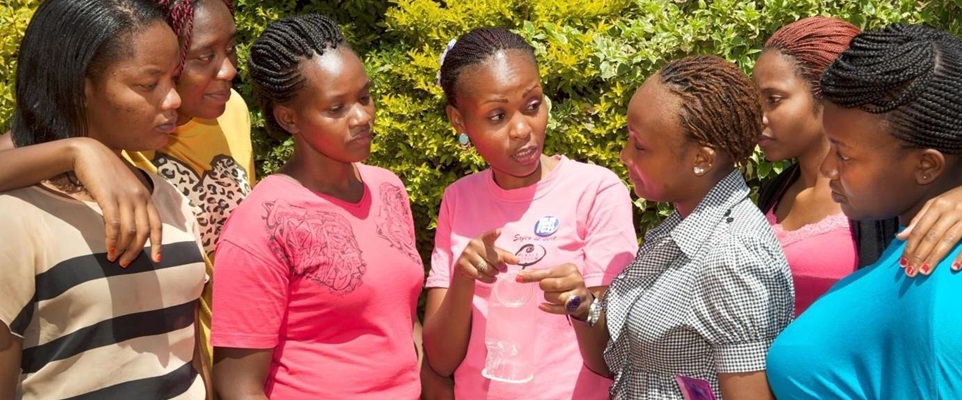Sexual and Reproductive Control: the Vital Underpinning of Women’s Economic Empowerment
Women’s control of their sexual health is a vital part of their ability to live an independent and economically empowered life.
My research on sexuality – interviewing women from a wide range of different backgrounds about their sexual imagination, experiences, and desires – has convinced me that it is crucial to women’s wellbeing to break the silence that surrounds it. Unfortunately, for women in the 21st century, sex and sexuality are often still taboo, and taboos are where pain, difficulty, shame and preconceptions converge. Yet this area of a woman’s life can bring her both the most intense pleasure and the most intense pain, and only through open and honest conversation can women learn how to safeguard and protect themselves.
The statistics are shocking. The number one cause of death among women aged between 15 and 44 around the world is HIV and AIDS, and four in every five women infected with HIV contracted it through heterosexual sex. These statistics tell us that there is a huge need for initiatives that make preventive methods easily available to women. This is undoubtedly why women’s sexual health is given such high priority by Sustainable Development Goal 5, which calls for gender equality and the empowerment of all women and girls. Target Six of SDG5 asks the international community to honour the commitments made in the 1994 Programme of Action of the International Conference on Population and Development and the 1995 Beijing Platform for Action, by making sure that all women and girls have universal access to sexual and reproductive health and reproductive rights.
Around 215 million women worldwide have no access to contraceptives. The scale of the annual fall-out that stems from women’s lack of control over their fertility is appalling. An estimated 76 million unintended pregnancies begin every year; around 21 million women then suffer unsafe abortions. Around 170 million women are newly infected with Sexual Transmitted Infections, and 1.5 million women die each year of AIDS. In sub-Saharan Africa, 61% of all new HIV infections occur among women.
Silence in the face of such suffering is simply not acceptable. Yet even in my native country, the Netherlands, a country that prides itself on being progressive on all sexuality issues, it is still difficult to really talk about sex. So I was fascinated to meet Denise van Dijk in September 2015, when she was planning a huge awareness-raising event for Global Female Condom Day in Amsterdam. The female condom was developed in the 1990s, at the time of the first wave of global publicity about HIV and AIDS. The aim was to develop a method that would give women dual protection against both unwanted pregnancy and sexually transmitted infections. This condom is still the only total protection against HIV available to women that they can be in full control of. So it is hard to believe that although it has been around for more 20 years, it is still not widely available.
Denise’s mission with the Female Health Company (FHC) is to reach as many women as possible with this simple, affordable way of protecting their reproductive health. She is now the global market development director of the FHC, which over the last three years has invested over $7 million in training and education on female condoms. Denise goes to governments, donors, NGOs, local partners and stakeholders all around the world to explain the Female Health Company’s FC2 condom. She makes sure that programmes designed to reach women and encourage as much uptake as possible, are implemented well.
The Female Health Company also has several master trainers, with Maya Gokul working the longest for FHC. Maya is based in South Africa and travels the continent to educate and train local community leaders, health educators, nurses, and sexual educators on the female condom. These are the people who become ambassadors for the female condom and work tirelessly to break the taboos to have vital conversations about the importance of sexual health protection.
Even so, in times of global austerity, the funds to subsidise female condom provision in countries where poverty is widespread – and where, perhaps, the need is greatest – are harder than ever to come by. However, solid independent research like the 2014 report The Business Case for Female Condoms, published by Global Health Visions and commissioned by leading sexual and reproductive rights advocacy organisation Rutgers, prove that when women can control and protect their sexual health, everyone benefits. Women who do not become ill or have unwanted pregnancies can work to support themselves and their families, and do not need to waste valuable resources on expensive treatment. An investment in women’s health is an investment in their potential for economic self-empowerment – and in the health of their community’s overall economy.
Working as a project manager for the FHC, I have come across countless inspiring women. Take Annick Anniya, communication officer for the Ministry of Health in Togo and running her own NGO. Inspired by an FC2 female condom training, she decided to become a trainer herself across East Africa. On World AIDS Day 2015, she trained volunteers to promote both female and male condoms to hundreds of people in public transport buses all around the city of Lomé. These are the everyday heroes behind the step-by-step progress already being made towards Target Six of SDG5.
Last September [2015] a milestone was reached: more than 500 million FC2 female condoms had been sold. The Universal Access to Female Condoms joint programme, which brought together NGOs such as Rutgers and Oxfam, has further helped to put the female condom on the agenda. I hope we can all continue to push through the taboos to have those sometimes uncomfortable conversations that give women control and empowerment.
